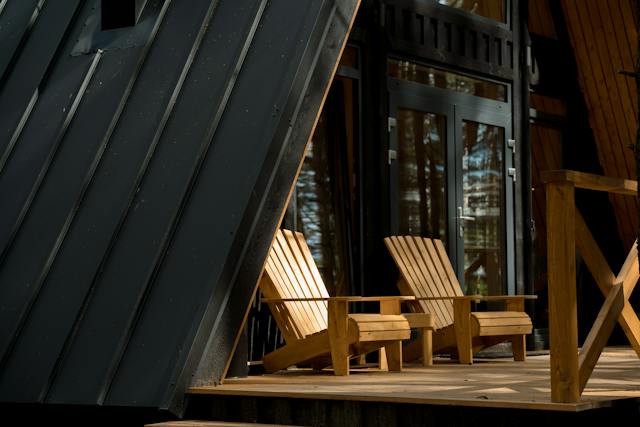If you’re dreaming of adding a deck to your home, you’re in for an exciting project. A deck isn’t just an extension of your living space; it’s a canvas where memories will be painted, from lively barbecues to tranquil evenings under the stars. But let’s be real for a second, the thought of actually building a deck can be a stress factory. So before you get started, this guide will walk you through the top 10 considerations for your deck-building project. Whether you’re a seasoned DIYer or planning to call in the pros, these insights will help ensure your deck is not only a stunning addition to your home but also a perfect fit for your lifestyle and needs.
Embrace Your Vision
Before you start buying wood and nails, you absolutely have to take a moment to visualize the deck of your dreams. Grab a piece of paper and sketch out a couple of concepts. Don’t worry if your drawing game sucks, this is all about bringing your thoughts onto paper. This step isn’t just about daydreaming; it’s about shaping your goals. Do you see a cozy space for family barbecues, or perhaps a serene spot for morning yoga? Your vision will guide every decision from design to materials. During this process, you might even realize that some aspects of your design won’t work, or you might discover further improvements on the idea. The last thing you want is to rush in, build the deck and afterward think that some things could actually be better if they were different.
Knowing Your Yard
Understanding your yard’s topography is crucial. You have to have a feel for the space. Is it level or sloped? The terrain really dictates the design and construction approach. For sloping yards, a multi-level deck might be the answer, while a flat space offers more straightforward options. Don’t forget to consider the sun and shade patterns throughout the day – they can significantly affect your deck’s usability.
Navigating Local Regulations
Please don’t skip this step. Before diving into your project, check local building codes and regulations. Your area might have specific requirements for deck construction, including size, height, and railing specifications. Permits are often necessary, so it’s wise to get all the paperwork sorted out early. If you’re unsure, dedicate some time to researching building codes and regulations in your area.
Choosing Materials Wisely
The materials you choose set the tone for your deck’s longevity and maintenance needs. While traditional wood offers a classic look, it requires regular upkeep. Composite materials, though pricier, offer a low-maintenance alternative with a variety of color options. Weigh the pros and cons in terms of durability, aesthetics, and maintenance. Take your time to consider all the pros and cons of each material type before making your final decision. After all, the deck will be a major addition to your home, so you have to be wise about it.
Designing For Your Lifestyle
A deck is a means to an end. No one gets a deck built for the sake of it. Your deck should complement your lifestyle. If entertaining is your thing, consider built-in seating and ample space for a grill. If relaxation is key, plan for comfy lounge areas and perhaps a space for a hammock. Let your daily habits and preferences shape the design. At the end of the day, how you use the deck should dictate the design.
Via Pexels
Safety First
Safety is a critical aspect of deck planning. The last thing you need is for your great aunt to fall down the deck stairs on the night of the deck warming party. You have to make sure that your design includes sturdy railings, especially if you have a raised deck. If children or pets will be using the area, consider features like gates or enclosed sections to keep them secure. Also, if you have a deck ramp in mind, then consider adding anti-slip strips for those wet and icy days.
Nailing Down The Budget
Now this is a big deal. For most people, their deck build would be a walk in the park if they had an open cheque book. A realistic budget keeps your deck project grounded. Costs can escalate quickly, so it’s important to factor in everything from materials to labor. Remember, the cheapest option isn’t always the best in the long run. Investing in quality materials and skilled labor can save money on maintenance and repairs.
The Role Of Professional Help
While DIY might be tempting, professional help can make a significant difference. A skilled contractor can bring your vision to life, ensuring that the deck is not only beautiful but also structurally sound. Don’t underestimate the value of residential electrician services for safe, code-compliant lighting and power solutions. Their expertise can seamlessly integrate electrical features into your deck, enhancing both functionality and ambiance.
Planning For The Long Haul
While the deck build might be at the top of your priority list at the moment, it is important to think about the future when planning your deck. Are there plans for a hot tub or outdoor kitchen down the line? Incorporating these elements into your initial design can save serious time and money down the line. Consider materials and construction methods that allow for easy upgrades or expansions if that is what you have planned down the line.
Eco-Friendly Considerations
Lastly, consider the environmental impact of your deck. Sustainable materials and construction methods can reduce your ecological footprint. Options like reclaimed wood or composite materials made from recycled content offer eco-friendly alternatives. Efficient lighting and water-wise landscaping around your deck can further enhance its green credentials.
In conclusion, planning a deck is an exciting journey. It’s a chance to extend your living space into the great outdoors. By considering these key factors, you’re on the path to creating a deck that’s not only a beautiful addition to your home but also a reflection of your lifestyle and values. Remember, a well-planned deck can offer years of enjoyment and add significant value to your property.










